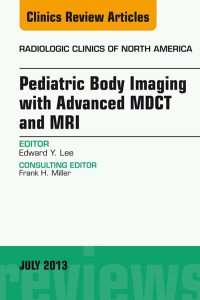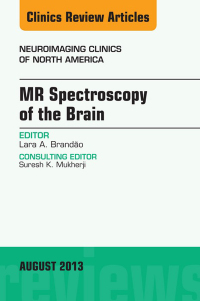-77%
Exploring the Landscape of Pediatric Imaging
Clinical Application of 3D and 4D MRI Vascular Imaging
This cutting-edge technique provides unparalleled insights into the intricate network of blood vessels in children. By utilizing 3D and 4D MRI, clinicians can non-invasively visualize and evaluate vascular anomalies, aiding in the diagnosis and management of congenital heart defects and other circulatory disorders.
Static and Functional MDCT and MR Imaging Evaluation of Tracheobronchomalacia
Tracheobronchomalacia, a condition characterized by weakness in the airway walls, can pose significant respiratory challenges in children. Advanced imaging techniques such as MDCT and MRI allow clinicians to accurately assess the structural and functional aspects of the airways, guiding therapeutic interventions and improving clinical outcomes.
Cartilage Imaging
Cartilage, a crucial component of the musculoskeletal system, plays a vital role in joint function and stability. In this issue, experts delve into the latest imaging modalities for evaluating cartilage health in children, providing early detection and monitoring of conditions such as osteoarthritis and growth plate disorders.
MR Imaging of Pediatric Muscular Disorders
Muscular disorders affect children of all ages, often presenting with a range of symptoms that can be challenging to diagnose. MR imaging, with its superior soft tissue contrast, enables clinicians to visualize and characterize muscle abnormalities, aiding in the diagnosis and classification of neuromuscular diseases.
MR Imaging of Rheumatologic Diseases
Rheumatologic diseases, such as juvenile idiopathic arthritis and systemic lupus erythematosus, can manifest in children with joint pain, swelling, and other debilitating symptoms. MR imaging serves as a powerful diagnostic tool for detecting and assessing the extent of inflammation, bone erosion, and other rheumatic manifestations, guiding treatment decisions and monitoring disease progression.
Genitourinary Imaging Evaluation
The genitourinary system is essential for proper bladder and kidney function. This section explores advanced imaging techniques for evaluating congenital anomalies, infections, and other genitourinary conditions in children, ensuring timely diagnosis and appropriate management.
Pediatric Hepatobiliary MR Imaging
The liver and bile ducts are central to digestion and metabolism. This issue features comprehensive coverage of hepatobiliary MR imaging in children, providing insights into the diagnosis and characterization of liver diseases, biliary tract abnormalities, and other gastrointestinal disorders.
CT Pulmonary Angiography
CT pulmonary angiography is a specialized imaging technique that uses X-rays and a contrast agent to generate detailed images of the blood vessels in the lungs. In this section, experts discuss the applications of CT pulmonary angiography in children, assisting in the diagnosis and management of pulmonary embolism, airway anomalies, and other respiratory conditions.
Vascular Anomalies
Vascular anomalies are abnormal formations of blood vessels that can occur anywhere in the body. This issue explores the various types of vascular anomalies in children, from hemangiomas and vascular malformations to lymphangiomas and arteriovenous fistulas, providing guidance on their diagnosis, classification, and treatment strategies.










Reviews
Clear filtersThere are no reviews yet.